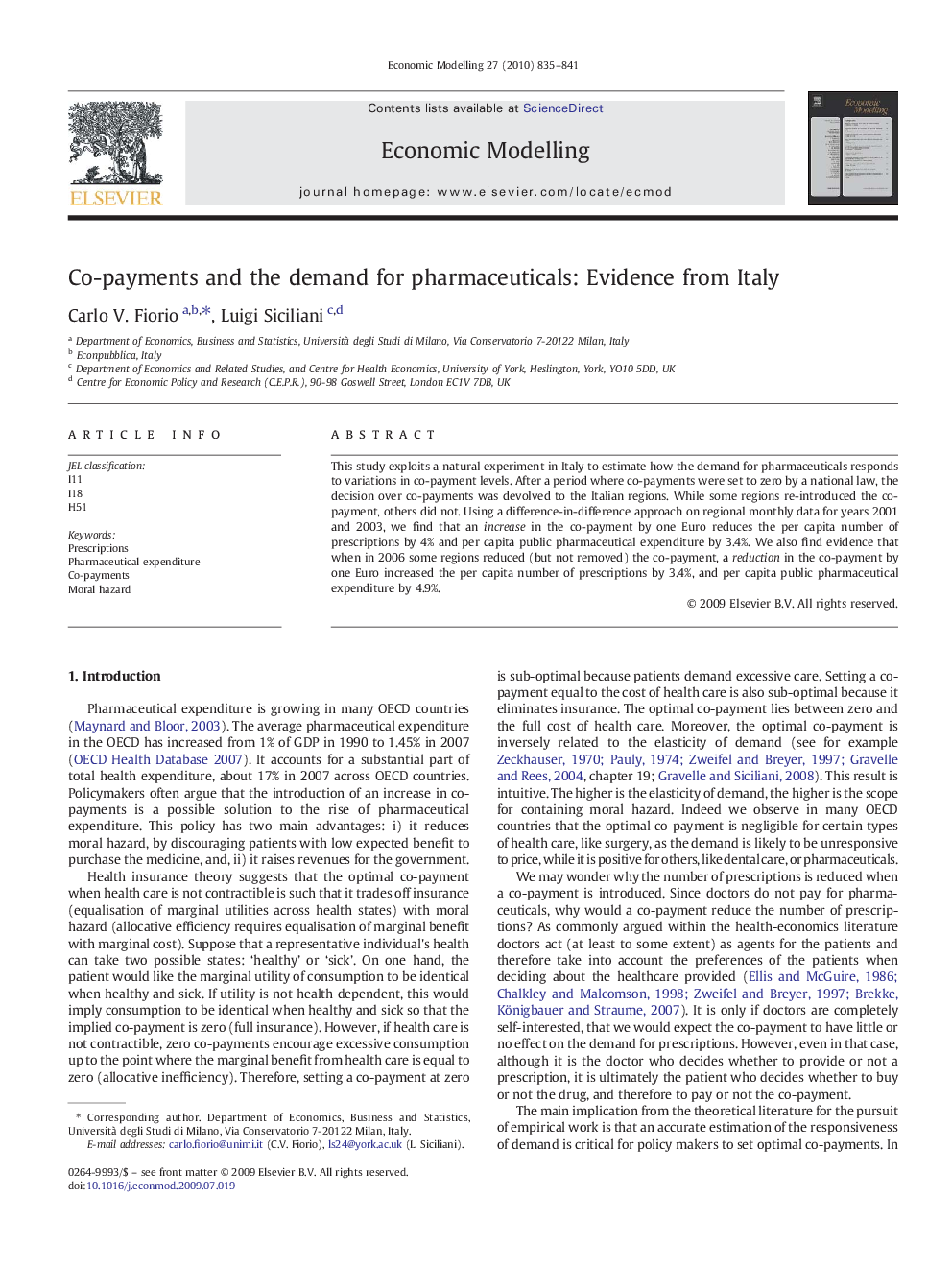| Article ID | Journal | Published Year | Pages | File Type |
|---|---|---|---|---|
| 5055543 | Economic Modelling | 2010 | 7 Pages |
Abstract
This study exploits a natural experiment in Italy to estimate how the demand for pharmaceuticals responds to variations in co-payment levels. After a period where co-payments were set to zero by a national law, the decision over co-payments was devolved to the Italian regions. While some regions re-introduced the co-payment, others did not. Using a difference-in-difference approach on regional monthly data for years 2001 and 2003, we find that an increase in the co-payment by one Euro reduces the per capita number of prescriptions by 4% and per capita public pharmaceutical expenditure by 3.4%. We also find evidence that when in 2006 some regions reduced (but not removed) the co-payment, a reduction in the co-payment by one Euro increased the per capita number of prescriptions by 3.4%, and per capita public pharmaceutical expenditure by 4.9%.
Related Topics
Social Sciences and Humanities
Economics, Econometrics and Finance
Economics and Econometrics
Authors
Carlo V. Fiorio, Luigi Siciliani,
